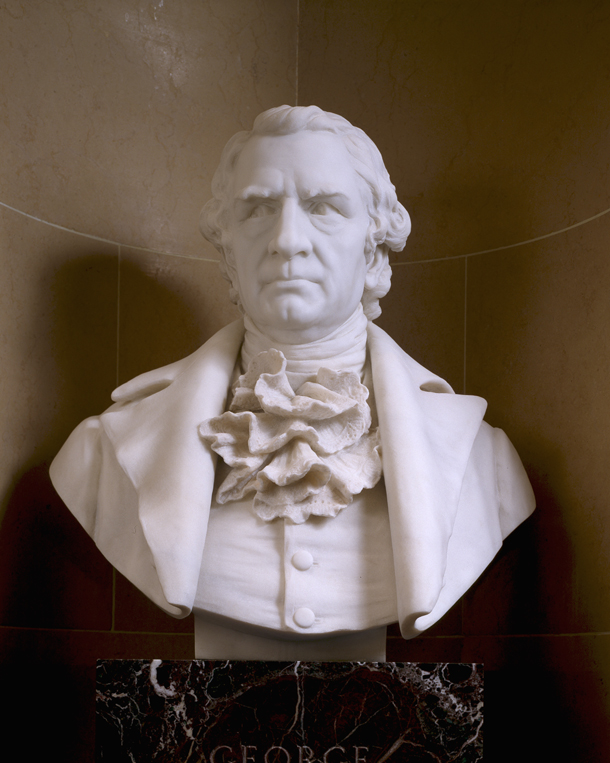
| Title | George Clinton |
| Artist/Maker | Vittorio A. Ciani ( 1858 - 1908 ) |
| Date | 1894 (carved), 1893 (modeled) |
| Medium | Marble |
| Dimensions | h. 29.25 x w. 27 x d. 18.25 in. (h. 74.3 x w. 68.6 x d. 46.4 cm) |
| Credit Line | U.S. Senate Collection |
| Accession Number | 22.00004.000 |
Sculptor Vittorio A. Ciani received the commission for a marble bust of Vice President George Clinton under authority of a Senate resolution approved in 1886. Ciani, an Italian citizen who maintained a studio in New York City, based his work on the best-known likeness of the vice president: an oil on canvas portrait by Ezra Ames. In December 1893 Ciani wrote Architect of the Capitol Edward Clark that he had completed the clay study model. The finished work, in marble, was installed in the Senate Chamber in 1894 as part of the Vice Presidential Bust Collection. Ciani is also known for sculpted works in St. Bartholomew’s Church, Grace Church, and Columbia College–-all in New York City–-and at The Breakers, the Newport, Rhode Island, home of the Vanderbilts. In 1897 Ciani received the cross of the Crown of Italy for historic merit from King Humbert.
A key figure in the growth of the nation from the Revolution to the War of 1812, George Clinton of New York served four years as vice president under President Thomas Jefferson and three more under President James Madison. Born in Little Britain, New York, Clinton was an active member of his state's anti-British faction and, in 1775, a New York delegate to the second Continental Congress. He served as a brigadier general in the Continental army during the Revolutionary War, helped frame New York's state constitution, and was chosen as the state's first governor.
During his six consecutive terms as governor, from 1777 until 1795, Clinton proved effective at managing trade and public welfare issues. He was an advocate of state sovereignty who vigorously opposed the federal Constitution, believing that it reduced New York's power in relation to other states. His views, put forth in a series of letters signed "Cato," were published in the New York Journal. These so-called Cato letters received spirited replies from Alexander Hamilton, writing in the Daily Advertiser under the pen name "Caesar."
Clinton declined to stand for reelection in New York in 1795 but returned to the governorship for a seventh term in 1801. Elected fourth vice president of the United States three years later, Clinton then sought the presidency in 1808. Instead, he was reelected vice president under James Madison. Clinton died in office in 1812.